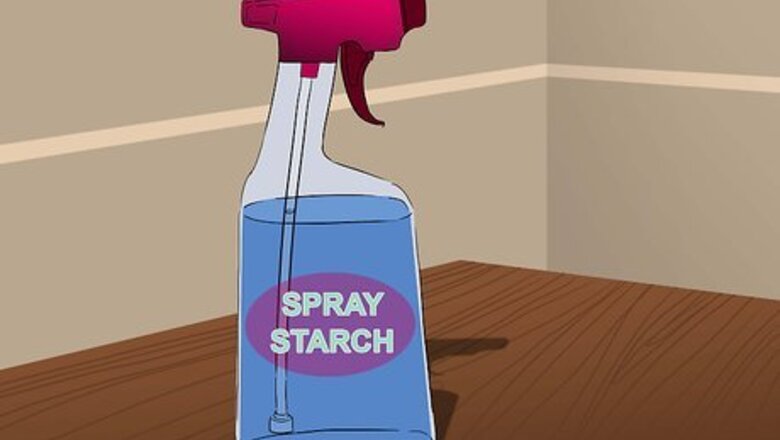
views
Preparing the Shirt

Get spray starch. You can purchase spray starch online or at your local supermarket. There are several types, including traditional aerosol cans and eco-friendly spray bottles. Another option is to make your own cornstarch spray at home.
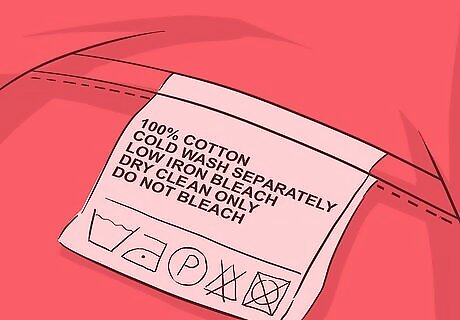
Check the care instructions on your polo shirt. The tag is usually located inside the collar of the shirt. If not, check the sides of the shirt on the inside. The back of the tag should tell you what material it was made of, how to wash it and any other special care you should take. The specific instructions on the tag of the shirt come from its manufacturer, and should trump any care instructions you read elsewhere if they contradict what’s on the tag.

Wash your shirt ahead of time. Make sure you treat any stains (for example, ink stains or underarm stains) before you wash the shirt, since ironing can set the stains permanently. Use a quality, non-bleach detergent and choose a cold-water machine wash. Don’t add any fabric softeners or bleach. Wash your polo shirts alone or along with other knitted clothing. You should wash dark colors separately from light colors. Wash your shirts inside-out to reduce fading.
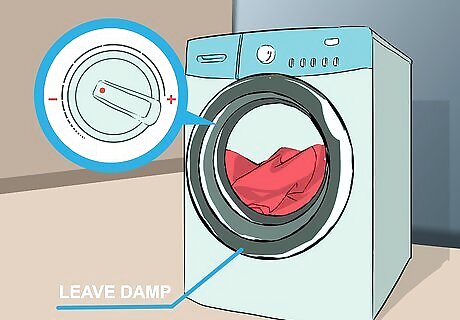
Partially dry your polo shirt. You can start out the drying process in a dryer machine on a low tumble-dry setting. Alternately, hang the shirt up to line dry. Either way, don’t dry the shirt completely unless you plan to use a steam iron or spray bottle of water. It’s best to iron the shirt while it’s still a bit damp. If line drying, put the shirt on a hanger and button the placket. The collar should be folded down. Smooth it with your hands. If the shirt is cotton, you may want to dry it on a drying rack so that it doesn’t shrink.
Ironing the Shirt

Set up your iron and ironing board. Make sure your iron is clean. If your shirt is 100% cotton, set it to high heat. If your shirt is a blend, use low heat. If the fabric is cotton or polyester and your shirt isn’t still damp from washing, put your iron on a steam setting or have a spray bottle of water ready to dampen the shirt. Don’t use steam if the fabric is silk. Test iron a small piece of fabric on the inside bottom hem before you fully iron your polo shirt. If the high temperature seems too much for the fabric, lower the iron’s temperature.
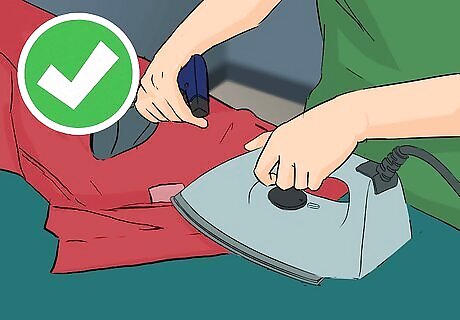
Iron the collar. Lay the shirt on the ironing board. Fold the collar down as you would like it to appear. Make sure the collar is damp, then iron it gently. Turn the shirt over and iron the other side of the collar. Spray the collar lightly with starch and iron the collar again. Then turn the collar inside-out, spray starch again, and iron again. This will prevent the collar from curling. Use the point of the iron for the point of the collars and any corners.
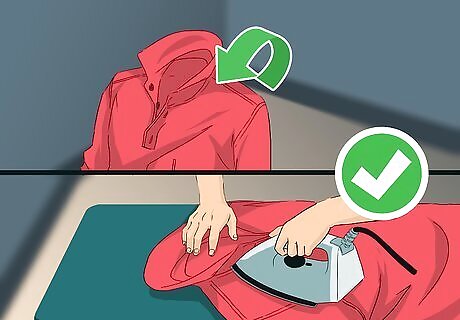
Turn the shirt inside out and starch it. Use your hands to smooth the shirt down. Also smooth the collar down from the inside. You don’t need to use starch on the body of the shirt. However, you can if you want it to appear stiff, like a button down dress shirt. Lightly spray starch all over both sides of the shirt. Starch can leave white marks on clothes, which is one of the reasons for ironing the shirt inside-out. The other reason is that some fabrics are sensitive to ironing, and this will guard the exterior of your shirt from getting shiny or singed from the iron.

Iron the top of the shirt. Iron the sleeves first, one at a time, by pressing the iron down and smoothing the fabric from the shoulder towards the cuff. Avoid ironing over the edge on the shoulders, or it will form a crease. Next, go over the placket and shoulders with your iron. Iron the chest of the shirt by moving from the center placket towards the shoulders. Your motions should be continuous. Don’t leave the iron too long in one place. If there are any patches or silk-screened logos on the shirt, avoid ironing those areas.
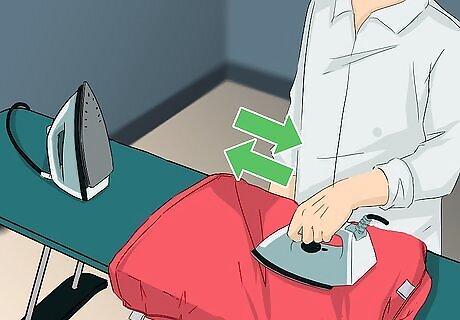
Iron the middle and bottom of the shirt. When you’re finished with the top front of the shirt, set the iron to rest on its bottom feet. Move the shirt up so that the front middle is laid out on your ironing board. Begin at the uppermost part of the shirt and move your way downwards with the iron. Repeat this process for the front bottom of the shirt, working downwards towards the hem. Turn the shirt over. It should be on its back and remain inside out. Smooth out the wrinkles, then repeat the process on the entire back of the shirt.

Turn the shirt right-side out. Check for wrinkles. Store it on a hanger until it is time to wear it. If you don’t have the closet space, you can fold the shirt. You can use steam when ironing. It helps to get rid of wrinkles faster. It is better to use it with cotton and wrinkle-prone fabrics. Before ironing, check the shirt's label and find the correct temperature to use for the iron.


















Comments
0 comment